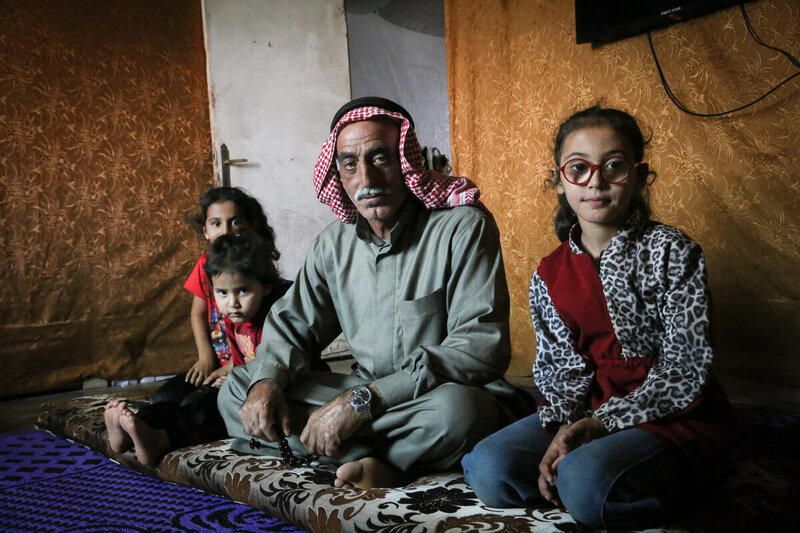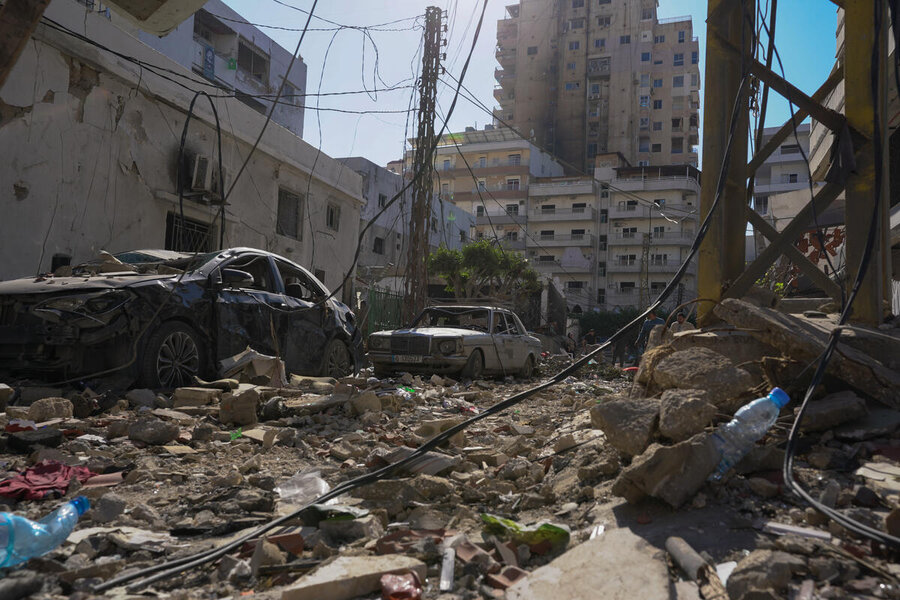Lebanon updates: Both peace and donor support are vital to reel back hunger, says WFP

Lebanon faces extraordinarily challenging times. While the ceasefire brings hope, the crisis is far from over. Displacement continues. Many communities remain unreachable. Humanitarian assistance will be needed for months.
In conflict-affected areas, people’s access to food is interrupted. They struggle to feed themselves as markets do not have the food and non-food products they need.
After the ceasefire announcement, there has been a mass return of displaced people to southern Lebanon, the Bekaa, and Beirut's southern suburbs, leaving 40,700 internally displaced people in shelters (as of 28 November).
- WFP closely monitors population movements and the conditions in newly created shelters where people return from Syria. We provide emergency assistance through hot meals in shelters, food parcels and cash support for displaced people in host communities.
- WFP works closely with the International Organization for Migration to track people's movements and respond at the appropriate scale.
- WFP has provided food and/or cash assistance to more than half a million people in shelters and communities since 2 September.
Including the people receiving assistance through regular programmes, WFP reaches 2 million people monthly.
As needs outpace resources, WFP urgently requests continued donor support for its emergency response and regular programmes to assist 2.2 million people, including nearly 900,000 Syrian refugees in Lebanon.
- With rising needs exacerbated by winter conditions, WFP urgently requires US$49 million to sustain its emergency operations going into 2025.
- Before this crisis, WFP was actively supporting vulnerable Syrian refugees and the most at-risk Lebanese people in Lebanon.
- To sustain these regular, non-emergency programmes, WFP requires US$389 million for the next six months.
-
Before this crisis, WFP provided food and cash assistance to more than 620,000 Syrian refugees and just over half a million Lebanese.

Destruction in Tyre - WFP needs both sustained peace and funding to support on the long road to recovery for the people of Lebanon. Photo: Mazen Hodeib
The conflict in Lebanon pushed hundreds of thousands of people across the eastern border into Syria. WFP teams in Syria were at all main border crossings from Lebanon, providing food assistance and working with partners in reception centres and among communities.
- WFP has provided food assistance for 420,000 people who crossed into Syria from Lebanon.
- WFP was on the ground on the Syrian side of the border, providing date bars and fresh meals to people crossing and to those already in temporary hosting centres.
- Some people have returned to Lebanon, but many remain and require continuing assistance.
In numbers
1.6 million
People WFP assisted in Lebanon before the current conflict
1 million
People WFP is planning to assist in Lebanon as a result of the current conflict
500,000
People reached in emergency response since September
58
Percentage of emergency operations in Lebanon currently funded
49 million
US$ required to sustain emergency operations until end of December
263 million
US$ net funding required for regular programme (Dec 2024-May 25)
Working with partners
WFP, in line with Government efforts, is establishing community kitchens for displaced people. To date, WFP has facilitated, in coordination with the Logistics Cluster, 15 convoys to hard-reach areas.
Social protection safety nets
WFP is helping Lebanon strengthen its social protection system, including support for national programmes to ensure cash aid reaches those in greatest need. It provided emergency cash assistance to 200,000 Lebanese affected by conflict, beyond its regular activities. WFP has also resumed cash transfers under a Government-led social safety net, benefiting more than 400,000 people after a pause since July 2024. Overall, up to 1.6 million people—nearly a quarter of the population—are impacted by the crisis and need help.
